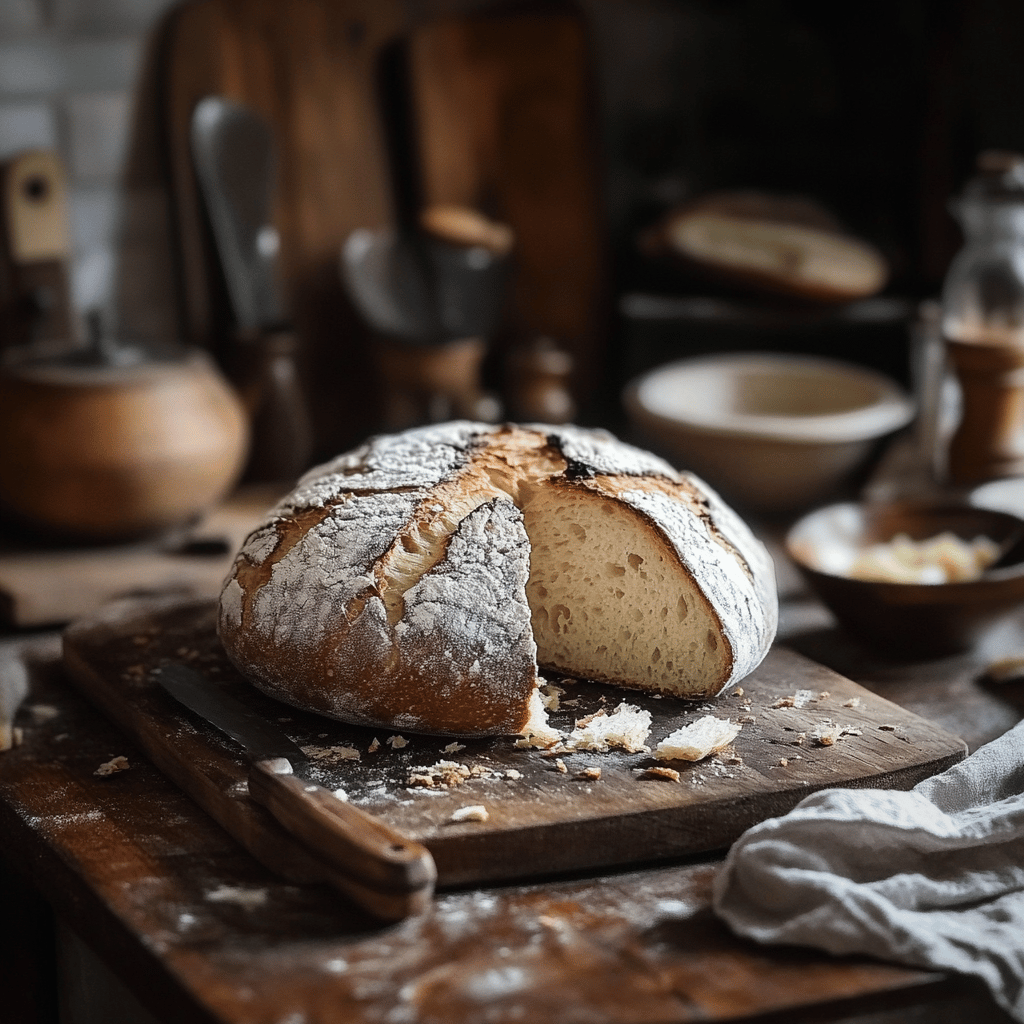The Best Fluffy Pancakes recipe you will fall in love with. Full of tips and tricks to help you make the best pancakes.

Don’t Throw It Out Yet: This Is How to Revive Stale Bread
Stale bread doesn’t have to mean wasted food. With a few clever tricks, you can breathe new life into your loaf. In this guide, we’ll explore various techniques to revive stale bread and even some creative ways to transform it into delicious new dishes, ensuring you get the most out of every crumb.
Introduction
We’ve all been there: a lovely loaf of artisan bread graces your kitchen counter, but life gets busy, and before you know it, it’s gone stale. Instead of tossing it in the trash, let’s look at simple solutions to revive that bread and save you money while cutting down on food waste. Whether it’s day-old baguettes or leftover sandwich bread, we’ll dive into methods of revival and creative uses that make stale bread a culinary treasure rather than a burden.
Understanding Staleness
Before we jump into how to save that stale bread, it’s important to understand what actually happens when bread goes stale. When bread becomes stale, it loses moisture, becoming hard and dry. Stale bread isn’t spoiled; it’s simply lost its freshness. Here’s what you need to know:
What Causes Bread to Go Stale?
There are a couple of primary factors that cause bread to go stale:
- Evaporation of Moisture: When bread is exposed to air, moisture evaporates, leading to a hard, dry texture.
- Starch Retrogradation: The starch molecules in bread reorganize themselves, which contributes to a tough crust and dense center.
Is Stale Bread Safe to Eat?
As long as your bread doesn’t show signs of mold, it’s safe to eat stale bread. In fact, many recipes will tell you that old bread can add flavor and texture to dishes. So instead of tossing it out, embrace the challenge of reviving it!
How to Revive Stale Bread
Here are tried-and-true methods to refresh stale bread, getting it back to a delightful state.
1. The Oven Method
Using an oven is one of the most effective ways to revive stale bread. Here’s how to do it:
- Preheat your oven: Set it to 350°F (175°C).
- Dampen the bread: Lightly spritz the bread with water or run it under water briefly. Make sure it’s not soaking wet.
- Wrap in foil: Wrap the damp bread in aluminum foil to create steam.
- Bake: Place the wrapped bread in the oven and bake for about 10 to 15 minutes.
- Remove and cool: Unwrap the foil and let it cool slightly before you enjoy!
2. The Microwave Fix
If you’re in a hurry, the microwave can also work wonders. Follow these steps:
- Dampen the bread: Wrap your stale bread in a damp paper towel.
- Microwave: Heat it in the microwave for 10-15 seconds. Check and repeat if necessary.
- Let it cool: Allow it to sit for a minute as it can become hot.
Note: This method is quick but not ideal for all types of bread, as it can sometimes lead to a chewy texture rather than a crusty one.
3. Using a Steamer
If you have a steamer, this method works beautifully:
- Prepare the steamer: Fill it with water and let it heat.
- Place the bread in the steamer: Place the stale bread in the steamer basket for about 5 minutes.
- Serve immediately: The steam will revive the bread’s moisture without making it soggy.
Creative Ways to Use Stale Bread
If you find that your bread is still not quite to your liking after reviving it, consider transforming it into something new with these creative ideas.
1. Bread Crumbs
Turning stale bread into breadcrumbs is a great way to add texture to several dishes:
- Making Breadcrumbs: Use a food processor to pulse stale bread into crumbs.
- Season and Store: You can season the crumbs before storing in an airtight container for later use in meatballs, topping casseroles, or breading.
2. Croutons
Stale bread is perfect for making croutons, adding crunch to soups and salads. Here’s a simple recipe:
- Cut the Stale Bread: Dice into cubes.
- Season: Toss with olive oil and your choice of seasonings (garlic, Parmesan, herbs).
- Bake: Spread on a baking sheet and bake at 375°F (190°C) for about 10-15 minutes until golden.
3. French Toast
Stale bread makes fabulous French toast. Here’s a quick recipe:
- Whisk Eggs: Combine eggs, milk, vanilla, and a pinch of salt.
- Soak the Bread: Dip the stale bread slices in the egg mixture.
- Cook: Fry in a little butter on a skillet until crispy and golden.
Best Types of Stale Bread to Revive
Some breads work better for revival techniques than others. Here’s a breakdown:
1. Baguettes and Artisan Breads
These crusty breads respond well to oven reviving methods and are perfect for croutons.
2. Sandwich Bread
Soft breads like white or whole wheat can be livened up in the microwave and are great for French toast or bread pudding.
3. Sourdough and Rye
These heartier breads can be revived effectively and often lend themselves well to creating breadcrumbs or croutons.
Useful Tips for Bread Storage
Proper storage can help prevent bread from going stale in the first place. Here are some effective strategies:
- Keep it in the Package: Leave bread in its original packaging if possible.
- Store at Room Temperature: Avoid refrigeration; it hastens staleness.
- Freeze for Later: If you won’t eat it within a few days, consider freezing it. Just slice first for easy thawing!
Conclusion
Next time you find your loaf has lost its luster, don’t throw it out! With the methods and creative ideas we discussed, your stale bread can go from drab to fab in no time at all. From reviving with simple techniques to transforming it into delectable dishes like croutons or French toast, stale bread can find new life in your kitchen.
For more delicious ideas, especially if you’re looking to incorporate some revitalized bread in tasty dishes, check out my recipe for Savory Garlic Herb Bread. It might just inspire your next culinary adventure!





